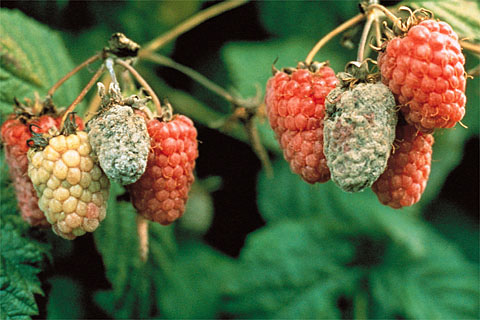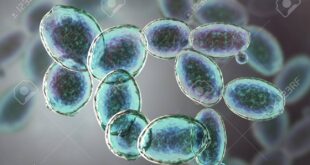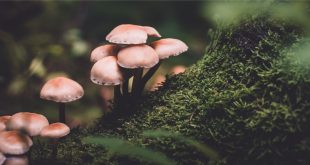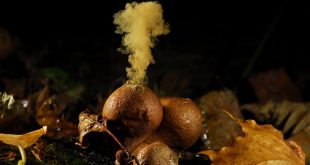Who hasn’t seen plants with some kind of abnormalities? We all have, right? Sometimes in the form of some black spots or white powders in the leaves; or sometimes those rotten roots or stems; or maybe those holes in the fruits that are making them inedible and many more. Perhaps we all are, to some extent, observers of nature, and in being so, we always have and will come to see these illnesses in plant bodies.
We always care about our bodies, but for plants? Who are there to care for them? Who is going to treat them; or cure them forever? Or should it be really necessary to care for plants? And most importantly what are those tiny aliens that are making those plants ill? And how do they develop? Or is it already too late to cure plants when it provides us with symptoms? If you are intrigued by these questions, you have come to the right place. This article has answers to some of these questions.
Birth of Plant Pathology
Statistics showed that human beings are dependent on only about 20 economic plants for their staple foods. These economic plants along with the other non-staple ones are a significant concern for botanists like us as their well-being and well-development each year will feed the population around the globe.
Many times in their life cycles, crops show the mentioned features and many other symptoms. This attack by various pathogens to develop symptoms and continue their spread is very alarming for us as the plants of our concern get partially or fully destructed and do not bear up to our expected production. It is sometimes necessary to destroy the whole crop field due to disease spread. Depending on weather conditions and the phytosanitary condition of crops, the prevalence of diseases can reach 70–80% of the total plant population.
In order to fight these problems, botanical science has developed a distinct discipline only devoted to this problem and its solution known as Plant Pathology. This beneficial science discusses many things such as the problems by pathogens on plants, the solution, the environmental concern, the genetic interaction between plants and pathogens, parasitism and pathogenicity, etc. Being an old discipline, this science has made huge progress and made some formulas of its own to face the challenge of both the problem and the formulation of a solution. One such key concept of plant pathology is The Disease Cycle.
Good to Know
-
The first scientist to study plant diseases was Charles Bessey. Charles Bessey recognized the importance of understanding the relationship between the environment, the host plant, and the causal agent of a disease. He was the first to describe the disease cycle, which outlines specific conditions that need to be present for a pathogen to cause disease in a plant. He recognized that for the pathogen to cause disease it needs to be present in the environment, the host plant needs to be susceptible to the pathogen, and environmental conditions must be favorable.
You can also read: The basic concepts of plant disease
The Disease Cycle
The disease cycle describes a sequence of sequential events that occur when a pathogen infects a plant. This occurs in conjunction with the pathogen’s life cycle and is dependent upon its host and environment. There are two alternating phases in each cycle:
- the parasitic phase and
- the survival or over-summering or over-wintering phase.
We can use the different events in a disease cycle to determine when and how to stop its spread by understanding how it works. Moreover, using one disease cycle as a model, one can predict other diseases caused by unknown or less-known pathogens.
Good to know:
- By the time we notice symptoms on plants, the pathogen has already gone through three or four stages unnoticed. Which are: inoculation, incubation, penetration, infection, and symptoms. This is similar to a rock rolling down a hill, with each step in the cycle carrying the infection further and further until it reaches the end.
Steps in a disease cycle
- Inoculation
- Incubation
- Penetration
- Infection
- Invasion
- Colonization
- Dissemination
- Over-wintering and over-summering
(The stages are discussed briefly here. For a further detailed study, follow each link after each description)
Inoculation
Inoculation is the first contact of a pathogen with its host in a place where the infection is possible. The pathogen may be in any of the stages of its life cycle when being inoculated.
- Most pathogens rely on rain, wind, insects, or humans to carry them to their host plants.
Penetration
Pathogens penetrate plant surfaces by direct penetration of cell walls, natural openings, or thorough wounds. It is to remember that, penetration doesn’t necessarily cause infection. There are many cells that can be penetrated but yet not susceptible to infection. In this case, the organism can not proceed beyond penetration and die without producing disease.
Link: Inoculation and penetration
Infection
When the inoculum starts procuring nutrients from the susceptible tissues of the host, the infection starts. This is the first stage from where the disease starts to develop.
As the pathogen devours soluble products from the cell, various symptoms start appearing.
- The time interval between inoculation and the appearance of disease symptoms is called the incubation period. During this period, the pathogen reproduces, builds up its population, and damages the plant’s tissues. This can lead to the emergence of symptoms and, eventually, the death of the plant if the disease is not treated.
Dissemination
Some pathogens which have motile stages such as nematodes, oomycetes, zoosporic fungi, and bacteria can easily disseminate very short distances on their own power. Fungal hyphae can grow between tissues in contact and sometimes through the soil toward nearby roots for a few too many centimeters. Both of these means of dissemination are quite limited. However, there are some fungi that can expel their spores up to a few centimeters in the wind above their sporophores.
Link: Infection and dissemination
Over-seasoning
Over-seasoning is an evolutionary developed technique followed by many pathogens to survive the adverse period of their life cycle. Pathogens have developed this so that they can complete their life cycle and spread their infection in the next year. The pathogens may survive this harsh period either as spores, sclerotia-like hard over-seasoning structures, or as a whole.
Link: Over-seasoning of pathogens
So, these are the successive steps of disease development by a pathogen. The science of plant pathology deals with these steps and always try to find a way to stop the cycle so that the disease can not spread further.
Revised By
- Tarannum Ahsan on 1st Feb 2023.
 Plantlet The Blogging Platform of Department of Botany, University of Dhaka
Plantlet The Blogging Platform of Department of Botany, University of Dhaka







disease cycle